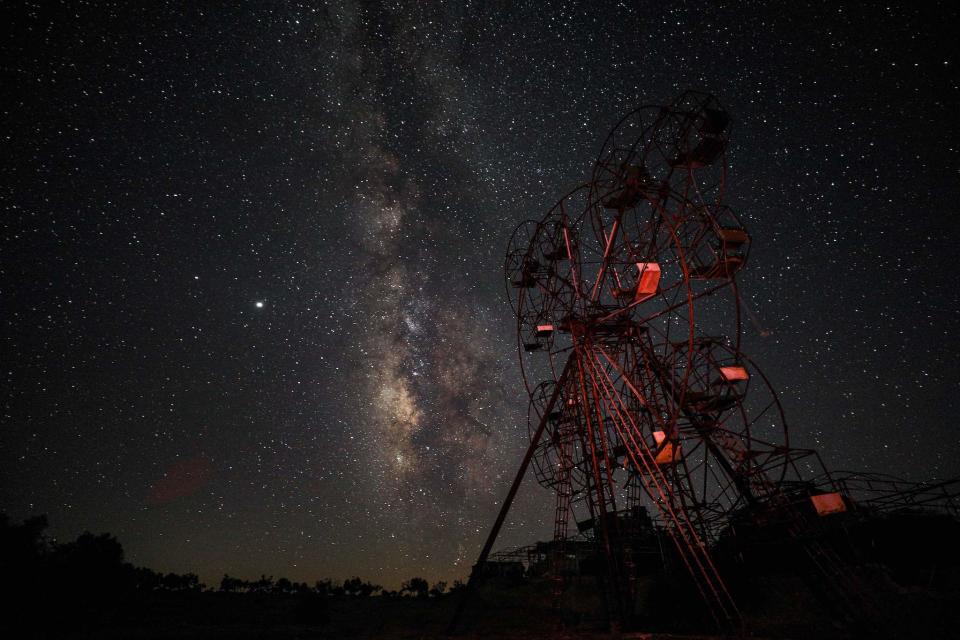Milky Way is being ‘twisted and deformed’ after a collision with another galaxy, scientists say

The Milky Way has been left disturbed by a collision with another, smaller galaxy, scientists say.
Some 700 million years ago – relatively recent, by the standards of the universe – the Milky Way suffered a crash that has left a long-lasting mark on its shape, scientists say. The discovery changes our understanding of the evolution of our galaxy and its history, they claim.
For a long time, our Milky Way has been viewed as relatively static, or has fallen into an equilibrium. Instead, it is undergoing savage contortions because of a collision with a smaller galaxy known as the Large Magellanic Cloud, or LMC.
The effects of that cosmic crash are still visible today, the researchers say, in the way they upset the fabric of the galaxy itself.
Astronomers were able to explore how the LMC warped the motion of the Milky Way using a statistical model that let them calculate the speed of the most distant starts in the Milky Way.
They found that the galaxy was not moving towards where the LMC currently is, as thought, but where it was in its past. It looks as if it is trying to catch a speeding train, and missing.
The LMC lives on as a satellite galaxy of the Milky Way, and can be seen as a faint cloud in the night sky of the Southern Hemisphere.
But what can’t be seen is the halo of dark matter that surrounds both it and our own Milky Way, revealed in recent research. Though those particles are invisible, they can be examine through their effects on the stars and gas that surround them.
The halo of dark matter seems to contorting the disc of the Milky Way, pulling it towards the constellation Pegasus. The strange direction appears to be a result of the fact that the LMC itself is moving even faster than the Milky Way.
“This discovery definitely breaks the spell that our galaxy is in some sort of equilibrium state. Actually, the recent infall of the LMC is causing violent perturbations onto the Milky Way,” said Jorge Peñarrubia, Personal Chair of Gravitational Dynamics, School of Physics and Astronomy at the University of Edinburgh, where the research was conducted.
"Understanding these may give us an unparalleled view on the distribution of dark matter in both galaxies."
Read More

 Yahoo Movies
Yahoo Movies 